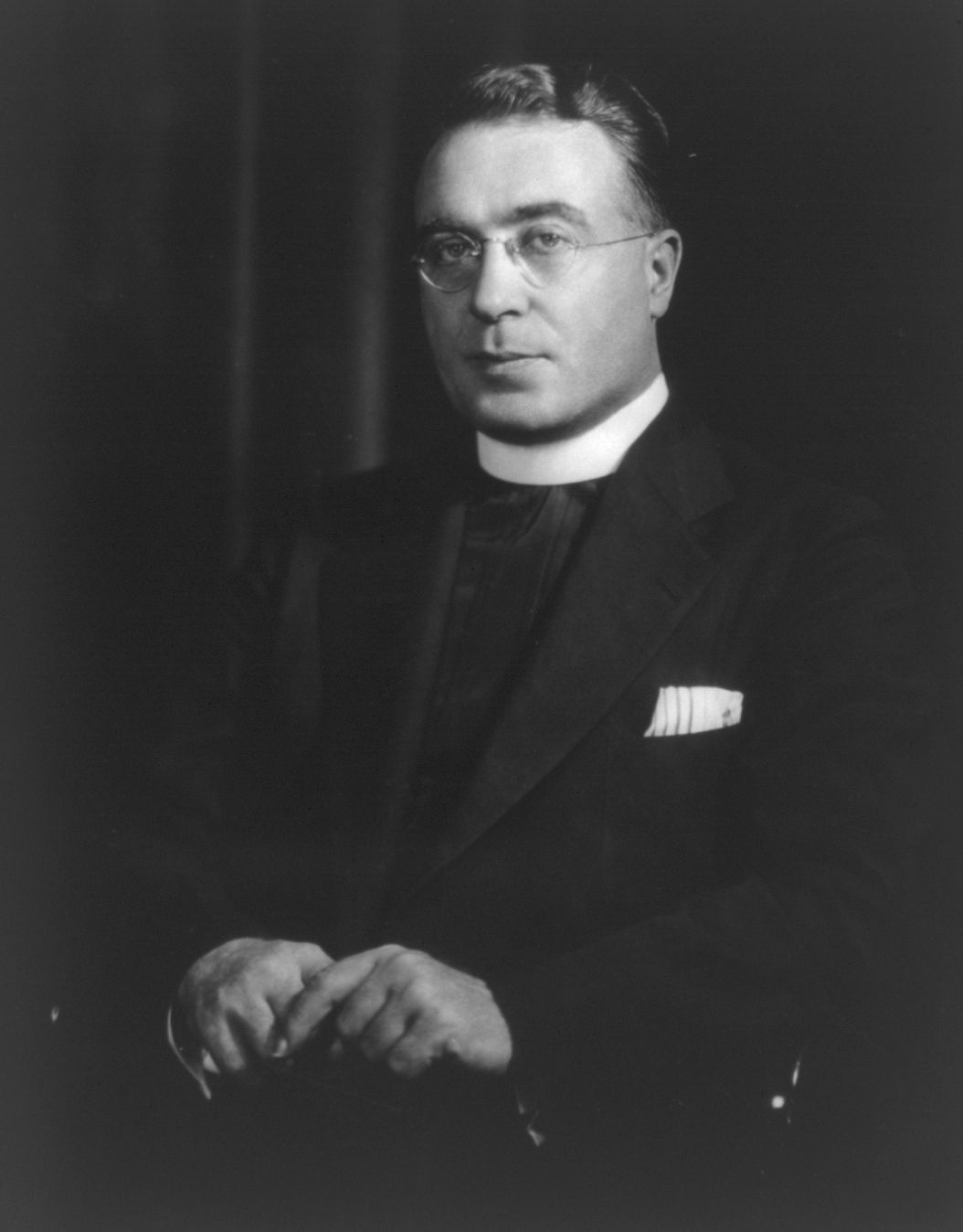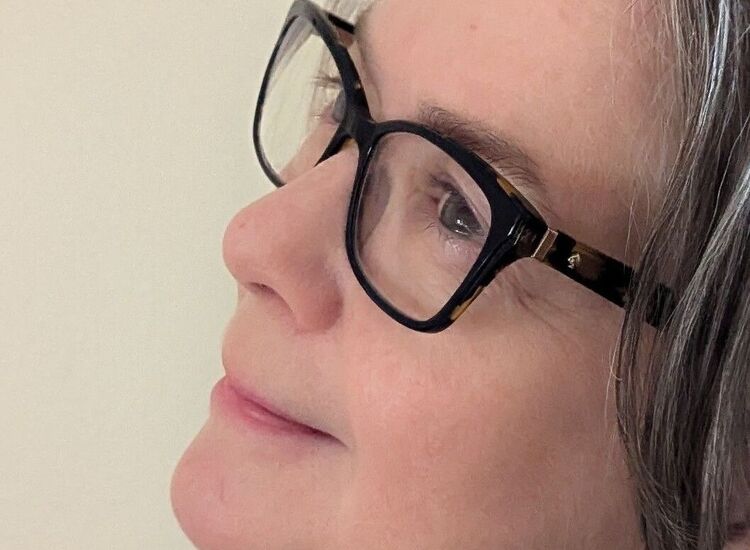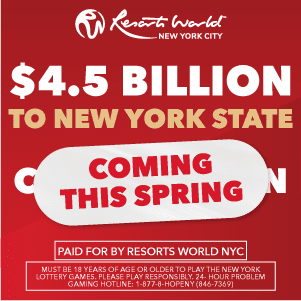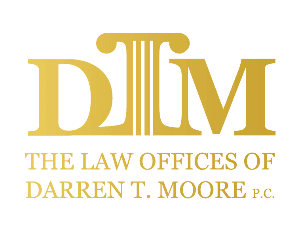In a previous column I mentioned the great show at the Jewish Museum, “Ben Shahn, On Non-Conformity,” that runs until through Oct. 26 at the Jewish Museum in Manhattan. One of the most arresting images in the show is a portrait of Irish Canadian the Rev. Charles Coughlin, an American icon of the 1930s. A demagogue, Coughlin denounced leftists like Shahn as anti-American. Shahn’s painting pulls no punches, portraying Coughlin as a fanatical speaker, fist raised, and head contorted into a pose not unlike Adolf Hitler’s. It is not surprising that Shahn’s painting mocked Coughlin. A pro-union leftist Jewish American who supported Franklin Roosevelt’s New Deal, Shahn despised Coughlin who was anti-union, anti-Roosevelt and even antisemitic.
Shahn’s troubling image struck some kind of chord in me, and I decided to research Fr. Coughlin. His amazing but largely forgotten story sheds a disturbing light on the popularity of his fascist ideas in pre-World War II America. One of the great ironies of Fr. Coughlin’s denouncing people as anti-American is his Canadian birth. Charles Edward Coughlin was born Oct. 25, 1891, the son of an Indiana‐born Great Lakes seaman, Thomas Coughlin, who married Amelia Mahoney, a Canadian, and settled in Ontario. At the University of Toronto, Charles Coughlin studied theology at St. Michael's College, run by the Basilian Order, which emphasized the doctrines of the “social church” and economic justice.
In 1926, after teaching for 10 years in Canada, Coughlin was transferred to the Diocese of Detroit, where the Ku Klux Klan wielded vast power and burned a cross in Fr. Coughlin’s churchyard. Horrified by such hatred, he went to station WJR in Detroit and proposed being given airtime each Sunday to explain Catholicism to the community. In 1927, Coughlin became the first Catholic priest in America with his own radio program, and it became an immediate success.
Much of Coughlin's appeal can be credited to his understanding of what the American public wanted to hear, but many attributed his popularity to his mellifluous voice. Writer Wallace Stegner described it as a "voice of such mellow richness, such manly, heart-warming confidential intimacy, such emotional and ingratiating charm, that anyone tuning past it almost automatically returned to hear it again." In the fall of 1930, CBS picked up Coughlin's radio show, broadcasting it over a national network for the first time.
Coughlin spoke on the radio at a time when priests were held in high esteem and his word went unchallenged by many Catholics. The “radio priest” began receiving approximately 80,000 letters a week. His small Michigan town had to hire 100 clerks to deal with the volume of mail he was receiving, and the community even built a post office largely dedicated to Coughlin’s mail. At first his messages were purely religious. A League of the Little Flower was formed and listeners sent in thousands of contributions weekly, most in sums no larger than a dollar.
His popularity continued to grow throughout the 1930s. His show “The Golden Hour,” which aired at 4 p.m. grew to have the largest listenership in the country and by some estimates the largest listenership in radio history. At the height of his popularity, 50 American stations broadcast his shows and perhaps 45 million Americans regularly tuned in, about a quarter to a third of the entire American population. At his peak Coughlin received 400,000 pieces of mail a week. A relative of mine who grew up in New York during Coughlin’s heyday remembers Coughlin’s program playing in every Irish Catholic household. He became easily the most influential Catholic voice in the United States, known around the country as “the Radio Priest.”
As his popularity increased so did his forays into politics. In the 1932 presidential election campaign, Coughlin staunchly supported FDR, stating famously that it was either "Roosevelt or Ruin." For Coughlin, the highlight of the campaign was an invitation to speak at the Democratic National Convention. Although FDR had borrowed some of Coughlin's rhetoric, after his election victory, he distanced himself from the radio priest. Coughlin soon grew critical of FDR and the New Deal and began calling Roosevelt a liar, a betrayer and a double-crosser.
In November of 1934, Coughlin set up his own organization, the National Union for Social Justice. Two years later he began publishing a nationally circulating paper called "Social Justice, which blamed Jewish bankers for the nation's economic problems and increasingly targeted two groups: Communists and Jews, claiming falsely that Jewish bankers had bankrolled the Soviet revolution and that the Soviet revolutionaries were all Jews. Throughout his career, he told listeners that Jews manipulated the economy, railing against the “international bankers” and “money changers” of the world.
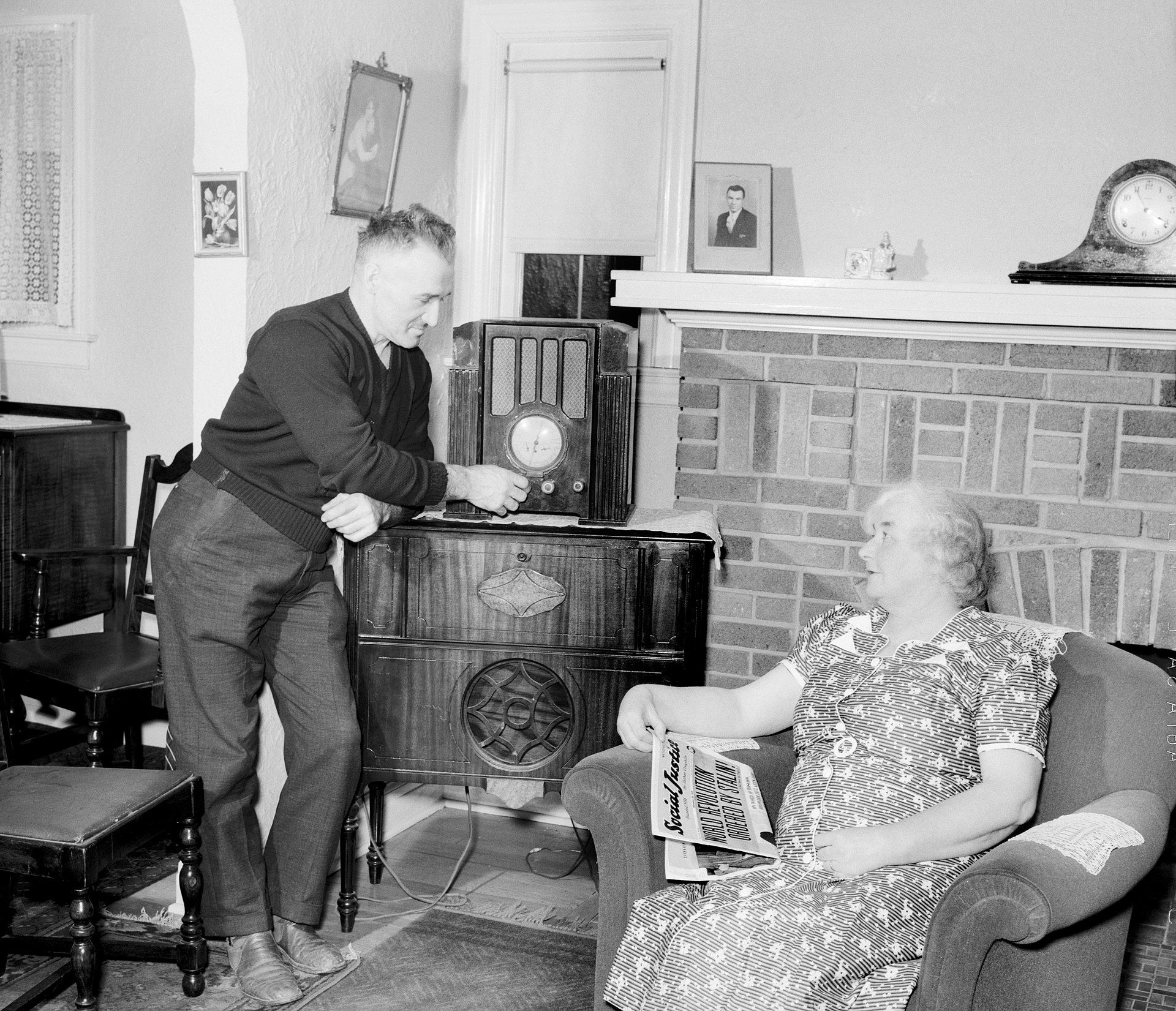
A Michigan couple pictured in 1939 were listeners to “The Golden Hour” and readers of “Social Justice.” [Library of Congress]
As the 1930s continued, Coughlin increasingly became an admirer of fascism, which he saw as the only force capable of preventing world domination by Communists. Some claim he became "openly anti-democratic.” Calling democracy a failure, he became an admirer of Mussolini, to whom Coughlin wrote a fan letter. He even translated some of Nazi propagandist Joseph Goebbels’s letters into his Catholic newsletter. Though there were increasing calls for the Catholic Church to silence Coughlin, only his bishop could do so, and he was a firm supporter of the radio priest.
Coughlin vehemently denied claims he was an antisemite, and he distanced himself from Nazi-linked groups like the pro-Nazi German-American Bund. Nonetheless, he continued to speak admiringly of Hitler and Mussolini. In 1938, he spoke to 18,000 adoring listeners at Madison Square Garden, and that same year, his newsletter published the vehemently antisemitic forgery “The Protocols of Zion.” In November, a Sunday sermon clearly crossed the line. Speaking to his listeners about the Kristallnacht during which mobs burned down 267 synagogues, destroyed 7,000 Jewish-owned businesses and arrested 30,000 Jews, Coughlin blamed the Jewish victims of this orgy of violence, claiming that the Jews had brought this punishment on themselves. A wave of condemnations followed, and some radio stations cancelled Coughlin’s broadcasts. A New York Times report from Berlin after the attack identified Coughlin as "the German hero in America for the moment" with his sympathetic statements towards Nazism as "a defensive front against Bolshevism.”
In a 2022 podcast, “Rachel Maddow Presents: Ultra,” the MSNBC presenter detailed Coughlin’s creation of a group called the Christian Front, which was a militia-like, pro-Nazi and antisemitic organization that drew its members primarily from working-class Irish and German American Catholic communities. It employed Nazi tactics including boycotts of Jewish businesses, attacking Jews on the streets and spreading antisemitic propaganda. In January 1940, the FBI arrested 17 Christian Front members, whom the bureau claimed were plotting a violent overthrow of the American government. The plot involved stockpiling weapons and planning to bomb public buildings and assassinate officials. Coughlin distanced himself from the arrested men and though they were acquitted it was another sign that Coughlin was a threat to democracy.
Finally, on May 1, 1942, his superiors in the church ordered him off the airwaves. He obeyed, saying later that “disobedience is a great sin.” He returned to his Michigan church and led it until he retired in 1966. He died in 1979 at age 88. Eleven years earlier, he told an interviewer that he stood by the positions he took on the air. Upon being silenced in 1942, he could have resisted, and “the people would have supported me,” he said. “But I didn’t have the heart left, for my church had spoken.”
In 2004, long after the priest’s death, novelist Philip Roth wrote an essay for the New York Times in which he called Father Coughlin “our nation’s antisemitic propaganda minister.” Sadly, Coughlin’s scapegoating and hate messages are not a relic of a bygone age. His wild accusations and demagoguery seem hauntingly familiar in America in 2025.

